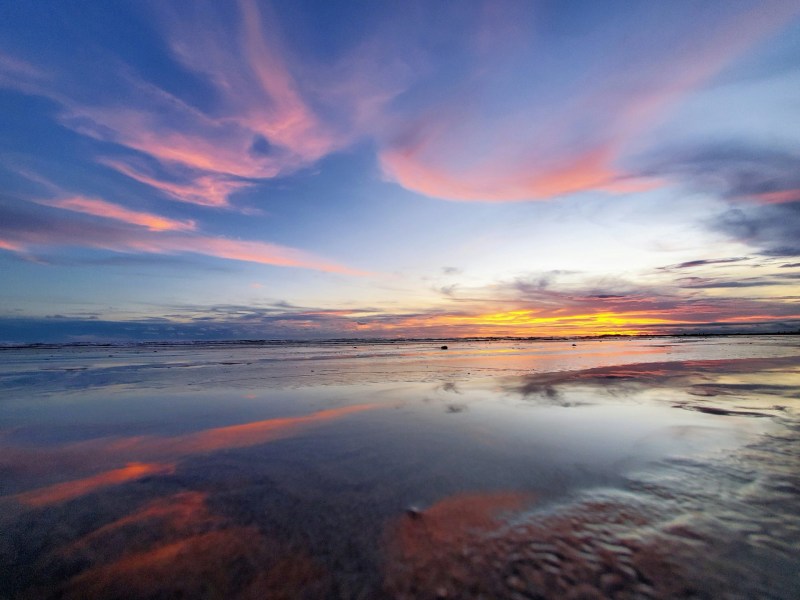Are you planning a trip to Costa Rica and wondering, “Is Costa Rica safe?” You’re not alone! Costa Rica is one of Central America’s most popular destinations, known for its gorgeous beaches, beautiful rainforests, and diverse wildlife, drawing in millions of visitors every year.
While it’s generally safe for most travelers, like any destination, there are a few things to keep in mind — like areas to avoid and precautions for outdoor adventures and healthcare. Let’s break down everything you need to know to make sure your Costa Rican adventure is a safe one.
Crime in Costa Rica

Costa Rica is known for its high standard of living and peaceful vibe. The country’s decision to abolish its army back in 1948 allowed it to invest heavily in education, healthcare, and environmental protection, helping it become one of the most stable and developed nations in Central America. Its “Pura Vida” philosophy reflects the laid-back lifestyle, which makes it a popular destination for tourists and expats.
However, like anywhere else, crime can happen. Recent reports from the U.S. Embassy have highlighted a rise in crime, with U.S. citizens frequently becoming victims. While petty theft is the most common issue, there have been instances of armed robberies — some in broad daylight. That said, there are steps you can take to keep yourself safe and avoid trouble. By staying aware and taking precautions, you can still enjoy everything Costa Rica has to offer without any issues.
The safest areas of Costa Rica

When it comes to safe spots in Costa Rica, there are a few areas that stand out as particularly friendly for tourists. Tamarindo is one of the most popular and safest beach towns on the Pacific coast. Known for its beautiful beaches, bustling nightlife, and strong surf culture, it offers a great mix of adventure and relaxation. This area is quite heavily populated, so you won’t need to worry about walking alone at night.
Another safe area is Drake Bay (Bahía Drake), located on the southwestern coast. This small and remote village is a favorite for families looking for a quieter escape. It’s not overrun with tourists, which adds to the sense of peace and safety. It’s a perfect spot for nature lovers, with several amazing beaches and easy access to Corcovado National Park.
If you’re seeking a more laid-back vibe, places like Nosara on the Nicoya Peninsula and the beach town of Puerto Viejo on the Caribbean side are also known for their safety and welcoming atmosphere.
The most dangerous areas of Costa Rica

While Costa Rica is generally safe for tourists, there are certain areas where extra caution is advised. While no area is completely free of crime, some regions have a higher incidence of incidents, especially after dark.
- San José: As the capital city, San José attracts many visitors, but some neighborhoods that are best avoided. Areas like Los Guido, Desamparados, Pavas, La Carpio, Leon XIII, the El Carmen neighborhood in Cartago, and the notorious “El Infiernillo” (Little Hell) in Alajuela are known for higher crime rates. It’s also wise to avoid parks at night.
- Limón City: Located on the Caribbean coast, Limón is a port city with one of the highest rates of organized crime and drug trafficking in the country.
- Quepos: Though it’s the gateway to the stunning Manuel Antonio National Park, Quepos has seen a rise in robberies in recent years. While the park itself is a must-see, staying vigilant in Quepos, especially after dark, is important to stay safe.
Safe travel tips for tourists

One of the most common issues visitors face in Costa Rica is having their money or belongings stolen. To avoid being caught off guard, it’s important to take a few simple steps to protect yourself and your valuables.
- Don’t fall for scams: Be cautious of people offering to “help” with your bags. This is a common scam, and it’s best to handle your luggage yourself.
- Keep an emergency stash of cash: Never keep all your cards and money in one place. Spread them out across different pockets or bags.
- Avoid flashy accessories: Wearing expensive jewelry or accessories can make you a target for thieves, so it’s best to leave those at home.
- Never leave your bags unattended: Whether you’re at the beach, in a café, or even on a bus, always keep an eye on your belongings.
- Don’t use overhead lockers on buses: Instead, get a ticket for the luggage compartment underneath the bus for added security.
Nature and wildlife safety
Costa Rica’s wildlife is incredible, but it comes with some risks. Be cautious of venomous snakes like the fer-de-lance and insects like mosquitoes that can carry diseases. Wear sturdy shoes and long pants when hiking to stay safe. Strong ocean currents, especially on the Pacific coast, can be dangerous. Always swim in designated areas with lifeguards. If hiking in national parks, consider hiring a guide. Avoid swimming in areas with crocodiles and stay aware of your surroundings to enjoy Costa Rica’s nature safely.
Health and medical safety
Costa Rica has a strong healthcare system, with both public and private options. Public healthcare is affordable but may involve longer wait times, while private care is faster but more expensive. Cities have modern hospitals, but facilities in rural areas can be more limited. It’s always a good idea to research nearby hospitals and make sure your travel insurance covers medical emergencies.
Is Costa Rica safe?

So, is Costa Rica safe? Overall, Costa Rica is a safe destination for tourists. While incidents can occur, staying aware of your surroundings and taking the proper precautions can help you defend against becoming a victim of crime.




